| GENETICS OF HEART DISEASE |
GENETICS OF CORONARY ARTERY DISEASE
(click on the photo to view the video)

Robert Roberts, M.D., University of Ottawa Heart Institute, ON, Canada
Susceptibility to coronary artery disease (CAD) is claimed to be 40-60% inherited, but until recently genetic risk factors predisposing to CAD have been elusive. Comprehensive prevention of CAD requires manipulation of genetic risk. The availability of microarrays of single nucleotide polymorphisms enabling genome-wide association studies (GWAS) led to the discovery of 33 genetic risk variants for CAD. MORE»

GENE DELIVERY TO MODIFY VASCULAR SMOOTH MUSCLE CALCIUM CHANNEL LOCALIZATION AND FUNCTION
(click on the photo to view the video)
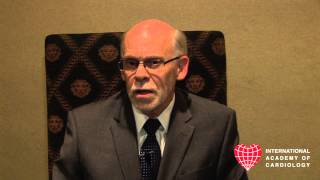
James D. Marsh, M.D., University of Arkansas for Medical Sciences, Little Rock, AR, USA
Develop dominant-negative L-type calcium (Ca) channel beta subunit genes that interdict normal protein trafficking of Ca channels and thus decrease calcium entry/release in vascular smooth muscle (VSM) cells. A long term goal is to develop gene delivery approaches to treat hypertension. MORE»

NEW APPROACHES TO IDENTIFY THE GENETIC CAUSES OF CONGENITAL HEART DEFECTS
(click on the photo to view the video)

Neil E. Bowles, Ph.D., University of Utah School of Medicine, Eccles Institute of Human Genetics, Salt Lake City, UT, USA
Few specific causes of congenital heart defects (CHDs) are well characterized, and most cases are due to the effects of multiple genetic and environmental factors and their interactions. A genetic predisposition has been suggested, based on familial clusters reported for nearly all cardiac malformations, and the increased recurrence risk after a first affected baby or with an affected parent. MORE»

CARDIAC HYPERTROPHY AND REMODELING IN NPR1 GENE-DISRUPTED MICE: ROLE OF PRO-INFLAMMATORY CYTOKINES
(click on the photo to view the video)

Kailash N. Pandey, Ph.D., Tulane University Health Sciences Center, School of Medicine, New Orleans, LA, USA
Genetic-disruption of guanylylcyclase/natriuretic peptide receptor-A (GC-A/NPRA) gene (Npr1) exhibit cardiac hypertrophy and congestive heart failure similar to those seen in untreated human hypertensive subjects. The objective of this study was to determine whether ablation of NPRA/cGMP signaling in mice alters the expression of pro-inflammatory cytokines including; interleukin-6 (Il-6), tumor necrosis factor-alpha (TNF-alpha), and transforming growth factor-beta1 (TGF-beta1) leading to cardiac hypertrophy and remodeling in Npr1 homozygous null mutant (Npr1-/-) mice. MORE»

|
| PLATELETS AND INFLAMMATION |
PLATELET FUNCTION AND CLINICAL ISCHEMIC OUTCOMES
(click on the photo to view the video)
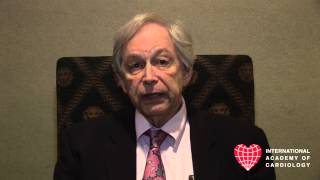
Lewis C. Becker, M.D., Johns Hopkins University School of Medicine, Baltimore, MD, USA
Acute coronary syndrome (ACS) results from formation of a thrombus on a ruptured coronary artery plaque. Primary treatment of ACS includes anti-platelet agents, such as aspirin, clopidogrel, or newer P2Y12 ADP inhibitors, such as prasugrel or ticagrelor. MORE»

C-REACTIVE PROTEIN-MEDIATED ENDOTHELIAL DYSFUNCTION AND ACUTE CORONARY ARTERY DISEASE
(click on the photo to view the video)

Janos G. Filep, M.D., University of Montreal, QC, Canada
Acute coronary artery disease (CAD) is associated with endothelial dysfunction and enhanced neutrophil influx into culprit lesions. Epidemiological studies have shown consistent relationship between markers of inflammation, such as C-reactive protein (CRP) and risk prediction of acute CAD. MORE»

|
| CARDIOPROTECTIVE THERAPIES |
MOLECULAR MECHANISMS OF THE BENEFICIAL CARDIOVASCULAR EFFECTS OF TRANS-RESVERATROL
(click on the photo to view the video)
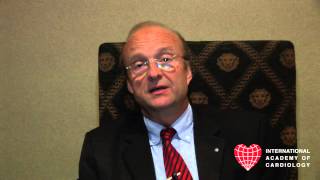
Ulrich Forstermann, M.D., Ph.D., Johannes Gutenberg University Medical Center, Mainz, Germany
An enhanced inactivation and/or reduced synthesis of vascular nitric oxide (NO) are seen in conjunction with cardiovascular disease. This endothelial dysfunction is largely caused by vascular oxidative stress with an increased production of reactive oxygen species (ROS) and a rapid inactivation of bioactive NO. MORE»

AMPLIFICATION OF THE MYOCARDIAL INFARCT SIZE LIMITING EFFECTS OF GLP-1 RECEPTOR ACTIVATION BY CILOSTAZOL, A PHOSPHODIESTERASE III INHIBITOR
(click on the photo to view the video)
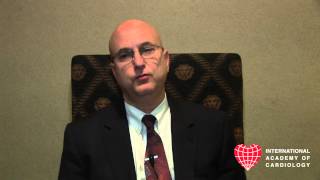
Yochai Birnbaum, M.D., Baylor College of Medicine, Houston, TX, USA
Glucagon-like Peptide (GLP1) analogues reduce myocardial infarct size (IS) in nondiabetic animals.Preconditioning of diabetic animals is limited. GLP1-receptor activation increases intracellular cAMP with downstream activation of protein kinase A (PKA). MORE»

|
| HEART FAILURE |
IS THERE DIFFERENCES IN PATHOPHYSIOLOGY AND VENTRICULAR REMODELING BETWEEN SYSTOLIC AND DIASTOLIC HEART FAILURE
(click on the photo to view the video)
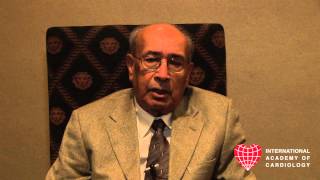
Kanu Chatterjee, M.D., Medicine University of Iowa, Medicine University of California San Francisco, CA, USA
There are considerable differences in morphology, functional derangements and left ventricular remodeling.
Differences in morphology: In systolic heart failure the ventricle dilated and spherical; In diastolic heart failure it is ellipsoidal and non-dilated. MORE»

PERIPARTUM CARDIOMYOPATHY: NEW CONCEPTS IN PATHOPHYSIOLOGY AND MANAGEMENT HEART FAILURE
(click on the photo to view the video)
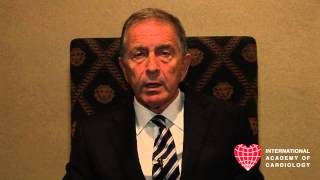
Uri Elkayam, M.D., University of Southern California, Keck School of Medicine, Los Angeles, CA, USA
Peripartum cardiomyopathy(PPCM) is an ididopathic cardiomyopathy presenting with heart failure (HF) due to left ventricular systolic dysfunction towards the end of the pregnancy or in the months following delivery, where no cause of HF is found. A recent animal experimentation has shown that female mice with cardiomyocyte specific knockout of STAT3 developed PPCM. MORE»

MECHANISMS OF CARDIAC DYSFUNCTION IN DIABETIC CARDIOMYOPATHY
(click on the photo to view the video)
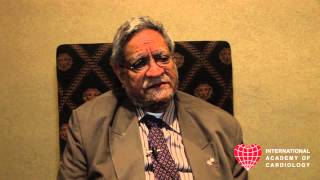
Naranjan S. Dhalla, Ph.D., M.D. (Hon), St. Boniface Hospital Research Centre, Winnipeg, MB, Canada
Chronic diabetes is known to be associated with the development of cardiomyopathy, metabolic derangement and cardiac dysfunction. By employing an experimental model of streptozotocin-induced diabetic cardiomyopathy, we have shown that cardiac dysfunction in this condition may be due to the activation of sympathetic nervous system and calcium-handling abnormalities in cardiomyocytes. MORE»

AGING AND HEART FAILURE: ROLE OF HEALING AFTER MYOCARDIAL INFARCTION
(click on the photo to view the video)
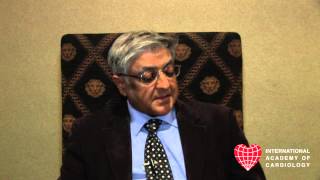
Bodh I. Jugdutt, M.D., University of Alberta and Hospitals, Edmonton, Alberta, Canada
The population of older patients with heart failure is increasing worldwide. Apart from the role of cardiovascular aging in HF among older patients, impaired healing after myocardial infarction (MI) may be a major culprit. Cumulative evidence over several decades has established that acute MI triggers the healing process, and optimal healing is needed for survival with a favorable outcome. MORE»

ALCOHOL SEPTAL ABLATION VS. SEPTAL MYECTOMY FOR HOCM: WHEN TO DO WHICH
(click on the photo to view the video)
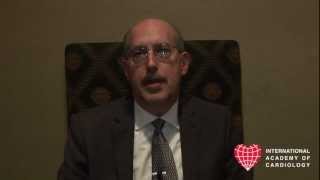
Michael A. Fifer, M.D., Massachusetts General Hospital, Boston, MA, USA
Alcohol septal ablation (ASA) was introduced in 1995 as an alternative to surgical septalmyectomy for patients with hypertrophic obstructive cardiomyopathy and symptoms refractory to optimal medical therapy. (No randomized comparative trials of ASA vs. myectomy have been done or planned. MORE»

THYROID HORMONE DYSFUNCTION AND HEART FAILURE: FEAR OF OVERTREATMENT MAY BE CAUSING HARM
(click on the photo to view the video)

A. Martin Gerdes, Ph.D., New York College of Osteopathic Medicine, Old Westbury, NY, USA
Growing evidence from human and animal studies suggests that low cardiac thyroid hormone (TH) function may be present in many individuals with heart disease, particularly those with heart failure (HF). Animal studies show that myocardial infarction and hypertension actually promote cardiac tissue hypothyroidism by induction of D3 deiodinases. MORE»

|
| ARRHYTHMIA AND ELECTROPHYSIOLOGY |
NEW INSIGHTS INTO IDENTIFICATION OF PATIENTS AT RISK FOR SUDDEN CARDIAC DEATH
(click on the photo to view the video)
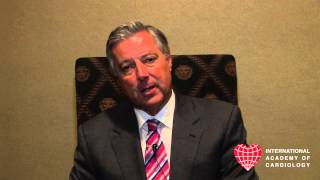
Michael E. Cain, M.D., University at Buffalo, Buffalo, NY, USA
The annual incidence of sudden death (SCD) in the United States is between 184,000 and 462,000, with estimates that 50% to 70% of deaths are due to VT or VF. Availability of therapies that have been shown to reduce SCD in various at-risk groups, including beta-blockers, ACE- inhibitors, statins, aldosterone blockers, and the ICD, underscore the need to accurately identify patients who will develop VT/VF within some specified time period, and exclude those who will not experience SCD. MORE»

IS CARDIAC RESYNCHRONIZATION THERAPY PROARRHYTHMIC?
(click on the photo to view the video)

Anne B. Curtis, M.D., University of Buffalo, Buffalo, NY, USA
Cardiac resynchronization therapy (CRT) is beneficial in the treatment of patients with systolic heart failure, New York Heart Association (NYHA) Class III-IV symptoms, left ventricular ejection fraction (EF) /=120 ms. CRT leads to improvement in EF and functional capacity, reverse ventricular remodeling, and better survival. MORE»

NEW ANTICOAGULANTS IN ATRIAL FIBRILLATION: ARE ALL THE SAME?
(click on the photo to view the video)
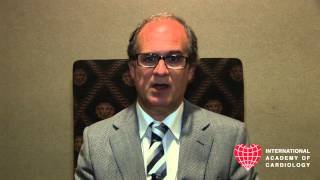
Antoni Martinez-Rubio, M.D., Ph.D., Hospital de Sabadell, Barcelona, Spain
Atrial fibrillation increases mortality and morbidity. In addition, the prevalence of the arrhythmia is growing. Current therapeutic options aim to relieve symptoms and only achieve poor compromises. Existing antiarrhythmic drugs are also associated with toxicities and do not improve clinical outcomes. MORE»

|
| VALVULAR HEART DISEASE |
THE IMPACT OF HYPERTENSION AND ITS TREATMENT IN HEART VALVE DISEASE
(click on the photo to view the video)
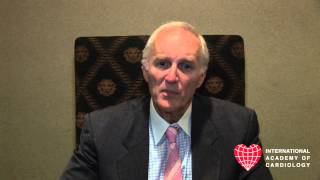
Jeffrey S. Borer, M.D., State University of New York Downstate Medical Center, New York, NY, USA
Heart valve diseases cause chronic mechanical (volume and/or pressure) overloads. Beneficial relief of the overloads involves replacement or repair of severely dysfunctional valves, reducing impedance to chamber outflow when valves are stenotic, or reducing volume overload when valves are regurgitant. MORE»

THE ROLE OF LRP5 IN CALCIFIC AORTIC VALVE DISEASE: LDL-DENSITY-PRESSURE THEORY
(click on the photo to view the video)

Nalini M. Rajamannan, M.D., Mayo Clinic, Rochester, MN, USA
Atherosclerosis and osteoporosis are the leading causes of morbidity and mortality in the World. Evidence indicates that hyperlipidemia plays a paradoxical role in both disease processes. However, the mechanism is not understood. The LDL-Density Pressure Theory hypothesizes the role of lipids activate atherosclerosis within the bone and the heart to initiate the development of diseases in both of these tissues. MORE»

PCI AND TAVR PERFORMANCE MEASURES: ONSITE VERSUS OFFSITE MONITORING
(click on the photo to view the video)

William J. Bommer, M.D., University of California Davis, Medical Center, CA, USA
Objective: To compare Off-site versus On-Site Monitoring of PCI and TVT Risk Registry Data Background: With over 48,000 PCIs and 500 TAVRs performed in California each year, California Registry Data offers a window to compare quality and performance Registry Data from both Onsite and Offsite audit monitoring. MORE»

|
| HYPERTENSION |
EMERGING MOLECULAR MECHANISMS OF PULMONARY ARTERIAL HYPERTENSION: ARE WE CLOSER TO A CURE?
(click on the photo to view the video)

Duncan J. Stewart, M.D., Ottawa Health Research Institute, The Ottawa Hospital, ON, Canada
Pulmonary arterial hypertension (PAH) is a devastating disease that affects people of all ages, but particularly young women, and is a progressive and often lethal disease. Despite many recent therapeutic advances, most patients ultimately progress and the prognosis remains poor with a mean survival of only 3-5 years after diagnosis. MORE»

HYPERTENSION IN ELDERLY
(click on the photo to view the video)
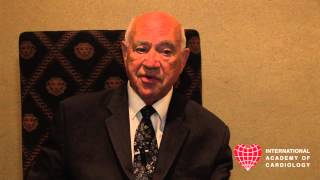
Wilbert S. Aronow, M.D., Cardiology Division, New York Medical College, Valhalla, NY, USA
Hypertension is present in 64% of elderly men and in 78% of elderly women. Hypertension in elderly persons is characterized by an increased systolic blood pressure (SBP) with a normal or low diastolic blood pressure (DBP). MORE»

BLOOD PRESSURE TARGETS FOR PATIENTS WITH CORONARY ARTERY DISEASE: IS LOWER BETTER?
(click on the photo to view the video)
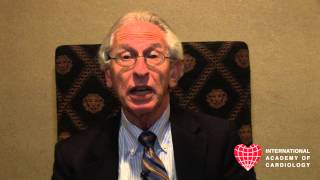
Clive Rosendorff, M.D., Ph.D., Mount Sinai School of Medicine, New York, NY, USA
Successive reports of the Joint National Committee on Prevention, Detection, Evaluation, and Treatment of High Blood Pressure (JNP) have lowered the blood pressure targets for therapy. The latest, JNC 7, recommended in 2003 a goal of
< 140/90 mm Hg, and <130/80 for patients with diabetes and chronic kidney disease. MORE»

ECHOCARDIOGRAPHY IN PULMONARY ARTERIAL HYPERTENSION: FROM DIAGNOSIS TO PROGNOSIS
(click on the photo to view the video)
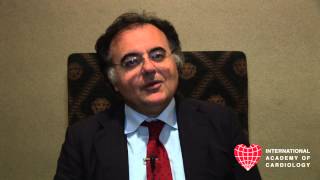
Eduardo Bossone, M.D., Ph.D., Cava de Tirreni & Amalfi Coast Hospital, Italy
Pulmonary arterial hypertension (PAH) is most often diagnosed in its advanced stages because of the non-specific nature of early symptoms and signs. Although clinical assessment is essential when initially evaluating patients with suspected PAH, echocardiography is a key screening tool in the diagnostic algorithm. MORE»

HOW IMPORTANT IS WHITE-COAT HYPERTENSION FOR THE APPROPRIATE TREATMENT OF HIGH-RISK PATIENTS WITH ISOLATED SYSTOLIC HYPERTENSION?
(click on the photo to view the video)

Stanley S. Franklin, M.D., University of California, Irvine, CA, USA
The significance of white-coat hypertension (WCH) in older persons with isolated systolic hypertension (ISH) remains poorly understood. Older subjects with ISH from the population based 11-country IDACO database who had daytime ambulatory blood pressure (ABP) and conventional BP (CBP) measurements were analyzed for cardiovascular risk. MORE»

PREHYPERTENSION: NOT A BENIGN CONDITION VASCULAR CONDITION
(click on the photo to view the video)

Christopher A. DeSouza, Ph.D., University of Colorado, Boulder, CO, USA
Hypertension (blood pressure > 140 mmHg systolic and/or 90 mmHg diastolic) is a primary risk factor for premature cardiovascular and cerebrovascular morbidity and mortality. Hypertension is estimated to cause 7.1 million premature deaths and account for ~5% of global disease burden. MORE»

RENAL DENERVATION-STATE OF THE ART
(click on the photo to view the video)

Stefan C. Bertog, M.D., Cardiovascular Center Frankfurt, Germany
Systemic hypertension is a major burden to the individual and society. Its association with major adverse cardiac and cerebral events and favorable effects of antihypertensive therapy are undisputed. However, despite multidrug therapy, blood pressures are frequently suboptimally controlled. MORE»

|
|
|
|
|  |
| AORTIC DISEASE |
THERE IS AN EFFECTIVE MEDICAL TREATMENT FOR THORACIC AORTIC ANEURYSM
(click on the photo to view the video)
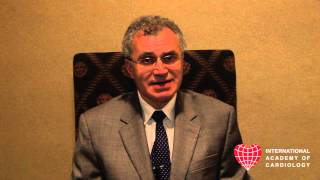
John A. Elefteriades, M.D., Yale University School of Medicine, New Haven, CT, USA
Objective: The potential of medical therapy to influence the courses and outcomes of patients with thoracic aortic aneurysms is not known. The aim of this study was to determine whetherstatin intake is associated with improved long-term outcomes in these patients. MORE»

ACUTE AORTIC DISEASES: TEMPORAL PATTERNS OF ONSET AND CLINICAL OUTCOME
(click on the photo to view the video)
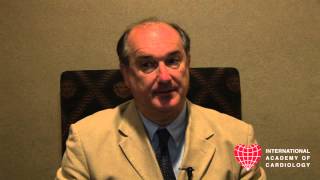
Roberto Manfredini, M.D., University of Ferrara, Italy
Objectives: This lecture is aimed to review the available recent literature on this topic, and add new knowledge about the possibility that weekend (WE) admissions may be associated with higher mortality for patients with acute aortic diseases (AAD) compared with weekday (WD). MORE»

INTERVENTION IN ADULT CONGENITAL HEART DISEASE: STENTING IN COARCTATION OF THE AORTA WITH SPECIAL REFERENCE TO THE ROLE OF COVERED STENTS
(click on the photo to view the video)
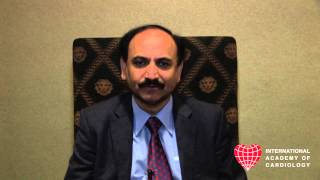
Masood Sadiq, M.D., Punjab Institute of Cardiology, Lahore, Pakistan
Stenting has emerged as an alternative to surgery and balloon dilatation in adults with native coarctation of the aorta (CoA). The risk of aneurysm formation and aortic dissection/ rupture has led to more and more the use of covered stents especially in patients with complex anatomy, near atretic or long segment coarctation, tortuous arch, transverse arch coarctation, associated PDA, Turner syndrome, old age and as rescue treatment in stent related complications. MORE»

|
| METABOLIC SYNDROME AND DIABETES |
REFINING RISK ASSESSMENT IN DIABETIC DYSLIPIDEMIA AFTER ACHIEVING LDL GOALS
(click on the photo to view the video)
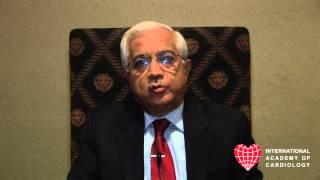
Om P. Ganda, M.D., Harvard Medical School, Boston, MA, USA
The current guidelines for lipid management emphasize LDL-cholesterol(LDL-C) as the primary target for high-risk individuals, such as those with type 2 diabetes, with or without prior CVD. Moreover, the recently completed ACCORD- LIPID and AIM-HIGH trials provide a stronger rationale for the pivotal role of intensive LDL reduction in reducing cardiovascular events. MORE»

SCREENING FOR CVD IN METABOLIC SYNDROME AND DIABETES
(click on the photo to view the video)

Nathan D. Wong, Ph.D., Heart Disease Prevention Program, Division of Cardiology, University of California, Irvine, CA, USA
While metabolic syndrome and diabetes are frequently considered high risk conditions for cardiovascular disease, with diabetes customarily considered to be a coronary heart disease (CHD) risk equivalent, recent evidence suggest these conditions are characterized by a wide variation in risk. Recent outcomes studies and clinical trials show many persons with diabetes are at only half the risk of future CHD as those with pre-existing CHD. MORE»

|
| ISCHEMIC HEART DISEASE |
ROBOTIC ASSISTED PCI: RESULTS OF THE PRECISE TRIAL USING THE CORPATH, REMOTE DELIVERY SYSTEM
(click on the photo to view the video)

George W. Vetrovec, M.D., VCU Pauley Heart Center, Richmond, VA, USA
While success and safety of PCI has increased significantly, there are still opportunities to improve PCI outcomes. One isuse of the Corpathrobotic PCI system. Potential benefits include less patient radiation exposure, lower contrast use, improved stent length sizing as well as lower operator radiation exposure and orthopedic risk. MORE»

EFFICIENT CHEST PAIN EVALUATION IN THE ED: ADDITIONAL VALUE OF HIGH SENSITIVITY TROPONIN
(click on the photo to view the video)
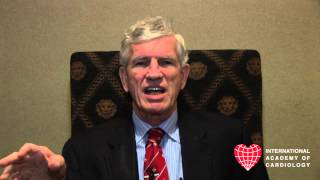
James H. Chesebro, M.D., UMASS Memorial Medical School and Medical Center, Worcester, MA, USA
The challenge of chest pain (CP) evaluation is not to rule in or out MI or CAD, but to determine patients especially at short-term (30 days-6 mo) risk of death or MI. Initial CP evaluation by AHCPR (Agency for Health Care Policy & Research) Guidelines into low (15%), intermediate (70%) or high (15%) risk depends on clinical history, physical exam and ECG for ST-changes during or between chest pains. MORE»

WHAT IS CONSIDERED TO BE THE OPTIMAL TREATMENT FOR STABLE ANGINA IN THE YEAR 2012?
(click on the photo to view the video)
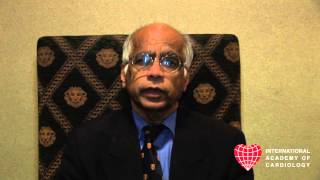
Udho Thadani, M.D., University of Oklahoma Health Sciences Center and VA Medical Center, Oklahoma City, OK, USA
Optimal treatment of stable angina consist of relief or reduction of patients’ symptoms, improvement of quality of life and prevention of serious adverse clinical outcomes such as acute coronary syndrome, cardiac death, and heart failure. Several old and effective medications (beta-blockers, long and short acting nitrates, and calcium channel blockers) and new novel agents (trimetazadine, ranolazine, ivabradine and nicorandil) ameliorate angina, improve exercise tolerance and exert anti-ischemic effects; but none have been shown to prolong life or prevent the occurrence of a myocardial infarction (MI) in patients with stable angina. MORE»

EMBOLIC PROTECTION IN STEMI: WHEN AND HOW?
(click on the photo to view the video)

Edo Kaluski, M.D., NJ Medical School & University Hospital, Newark, NJ, USA
Distal embolization (DE) occurs in practically all cases of primary PCI. However, DE has been noted angiographically and clinically in only 15% and 35% of primary PCI respectively and is associated with poor clinical outcome and higher mortality. DE is composed of predominantly organized clot (47%), fresh thrombus (29%) and atherosclerotic debris (24%). MORE»

|
| MOLECULAR SURVIVAL AND REGENERATION |
CELL LONGEVITY PATHWAYS GOVERN VASCULAR AND INFLAMMATORY RESPONSES TO OXIDANT STRESS
(click on the photo to view the video)

Kenneth Maiese, M.D., New Jersey Medical School, Newark, NJ, USA
More than 170 million individuals world wide are affected by diabetes mellitus (DM). Although complications of DM as a result of oxidative stress are broad in nature, disability in the cardiovascular system can be the most severe. MORE»

THE CONUNDRUM OF MYOCARDIAL REGENERATION
(click on the photo to view the video)

Werner Mohl, M.D, Medizinische Universität Wien, Vienna, Austria
Concepts of cardiac regeneration including cellular therapies and other interaction to recover the compromised heart remain in the early stage of clinical application. Although being controversial, recent research shows that adult cardiac muscle has potential to activate innate regenerative processes. MORE»

CALPAIN-MEDIATED DYSTROPHIN DISRUPTION MAY BE A POTENTIAL STRUCTURAL CULPRIT BEHIND CHRONIC DOXORUBICIN-INDUCED CARDIOMYOPATHY
(click on the photo to view the video)
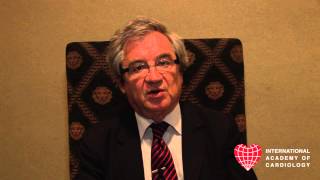
Marcos A. Rossi, M.D., Ph.D., University of Sao Paulo, Ribeirao Preto, Sao Paulo, Brazil
The critical importance of dystrophin to cardiomyocyte contraction and sarcolemmal and myofibers integrity, led us to test the hypothesis that dystrophin reduction/loss could be involved in the pathogenesis of doxorubicin-induced cardiomyopathy, in order to determine a possible specific structural culprit behind heart failure. Rats received total cumulative doses of doxorubicin during 2 weeks: 3.75, 7.5, and 15 mg/kg. MORE»

CROSS-TALK BETWEEN MITOCHONDRIAL AND ER DEATH PATHWAYS IN THE HEART
(click on the photo to view the video)
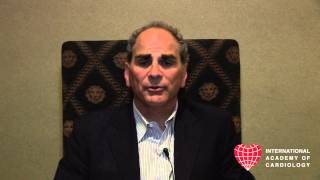
Lorrie A. Kirshenbaum, M.D., Ph.D., University of Manitoba, Winnipeg, MB, Canada
Alternative gene splicing provides a versatile mechanism by which cells generate proteins with different or even antagonistic properties. Previously we determined the hypoxia-inducible protein Bnip3 is integral component of the mitochondrial death pathway that can signal apoptosis and autophagy but the precise mechanisms that differentially regulates these divergent processes remains cryptic. MORE»

LINEAGE MARKERS IN TRACKING CARDIAC FIBROBLAST FATE IN VIVO AND IN VITRO
(click on the photo to view the video)

Carlin S. Long, M.D., University of Colorado Health Sciences Center, Denver, CO, USA
We have utilized two transgenic lines first reported in order to investigate heterogeneities among cardiac fibroblast and myofibroblast cell phenotypes in hepatic fibrosis. These are novel transgenic mice that express lineage-sensitive promoter:reporter constructs wherein the smooth muscle actin promoter drives the dsRed Fluorescent Protein (SMA:RFP) and the collagen promoter drives the expression of the enhanced Green Fluorescent Protein (Coll I:EGFP). MORE»

STEM CELLS FOR CARDIAC REGENERATION IN THE DIABETIC AND NON-DIABETIC HEART
(click on the photo to view the video)

Dinender K. Singla, M.D., University of Central Florida, Orlando, FL, USA
Recently, we reported that embryonic and induced pluripotent stem (iPS) cells following transplantation into infarcted heart can inhibit apoptosis and differentiate into cardiac myocytes. iPS cells can have wide application in for the treatment options in regenerative medicine including diabetes. In the present study, we explored the use of iPS cells or factors released from iPS cells in their potential for cardiac and neovascular cell type differentiation as well as in the remodeling of dysfunction heart due to diabetes. MORE»

|
| CARDIOVASCULAR IMAGING |
PROGRESS IN ECHOCARDIOGRAPHY
(click on the photo to view the video)
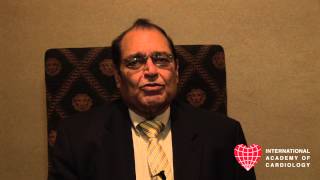
Navin C. Nanda, M.D., University of Alabama at Birmingham, Birmingham, AL, USA
Echocardiography has today become the most widely used technique in the noninvasive assessment of cardiac disease entities. It began in the fifties and sixties as A-mode and M-mode echocardiography in which a pencil-thin ultrasound beam was sent to the heart by placing a small transducer on the chest wall and images of very small portions of cardiac structures were obtained at any given time. MORE»

NOVEL ECHOCARDIOGRAPHIC INDICES OF LEFT VENTRICULAR DIASTOLIC FUNCTION
(click on the photo to view the video)
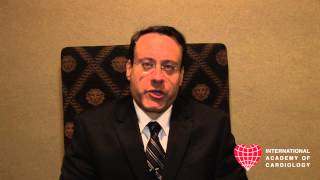
Sherif F. Nagueh, M.D., Methodist DeBakey Heart and Vascular Center, Houson, TX, USA
Echocardiography plays an essential role in the evaluation of patients presenting with heart failure. While conventional indices of left ventricular (LV) diastolic function can be applied in many cases, there are clinical situations where their application is limited. MORE»

REVIEW OF MOVAHED'S SIGN (D SHAPED LEFT VENTRICLE SEEN ON GATED SPECT) SUGGESTIVE OF RIGHT VENTRICULAR OVERLOAD
(click on the photo to view the video)
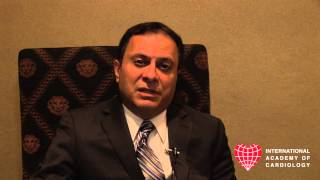
Mohammad R. Movahed, M.D., Ph.D., University of Arizona Sarver Heart Center, Tucson, AZ, USA
Recently, D shaped ventricle seen on gated SPECT imaging (Movahed’s sign) has shown to correlate with right ventricular overload similar to the D shape ventricle seen on echocardiography. Right ventricle (RV) imaging during gated SPECT studies is challenging because of the low tracer uptake due to relatively smaller right ventricular myocardial mass and lower coronary flow to the RV. MORE»

|
| CARDIOVASCULAR SURGERY |
MANAGEMENT OF EARLY POSTOPERATIVE CORONARY ARTERY BYPASS GRAFT FAILURE
(click on the photo to view the video)

Louis P. Perrault, M.D., Ph.D., Montreal Heart Institute, Montreal, QC, Canada
Objectives: Perioperative graft failure following coronary artery bypass grafting may result in acute myocardial ischemia. Whether acute percutaneous coronary intervention, emergency reoperation, or conservative intensive care treatment should be used is currently unknown. MORE»

ANTIBODY MEDIATED REJECTION IN HEART TRANSPLANTATION: A CLINICIAN€S PERSPECTIVE
(click on the photo to view the video)

Maryl R. Johnson, M.D., University of Wisconsin, Madison, WI, USA
Since the early 1980’s, accumulating evidence has shown an association between anti-B cell antibodies, anti-HLA antibodies, and the endomyocardial biopsy findings of vasculitis or immunoglobulin/complement deposition and cardiac allograft dysfunction and the development of cardiac allograft vasculopathy (CAV). Unfortunately the pathologic definition of antibody mediated rejection (AMR) was only agreed upon recently, and the importance of circulating antibodies and clinical findings in the definition of AMR remain controversial. MORE»

DESIGN OF FUTURE REVASCULARIZATION EVALUATION IN PATIENTS WITH DIABETES MELLITUS: OPTIMAL MANAGEMENT OF MULTIVESSEL DISEASE (FREEDOM TRIAL)
(click on the photo to view the video)
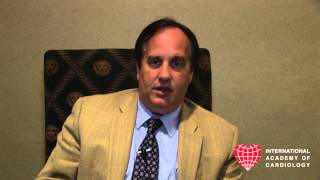
Michael E. Farkouh, M.D., University of Toronto, ON, Canada
Indication: Treatment of multivessel coronary artery disease (CAD) in patients with diabetes. Objective: To evaluate whether percutaneous coronary intervention (PCI) with drug-eluting stenting (PCI/DES) is more or less effective than the existing standard of care, coronary artery bypass surgery (CABG). MORE»

|
| RISK FACTORS AND PREVENTION |
CARDIOVASCULAR PREVENTION - A GLOBAL PROBLEM
(click on the photo to view the video)

Ulrich Keil, M.D., Ph.D., University of Muenster, Germany
"Four non-communicable diseases(NCDs), mainly cardio-vascular diseases(CVD), cancers, chronic respiratory diseases and diabetes are the world`s biggest killers, causing an estimated 36 million deaths in 2008-representing 63% of the 57 million global deaths that year - with 80% in low and middle income countries. As these NCDs are largely preventable it is time to invest in the prevention of these NCDs by eliminating shared risk factors, mainly tobacco use, unhealthy diet, physical inactivity, and the harmful use of alcohol"(WHO 2008). MORE»

RECONSIDERATION OF THE ROLE OF STATINS IN PRIMARY PREVENTION; POTENTIAL OF ADVERSE EFFECT RELATED TO GENETIC VARIABILITY
(click on the photo to view the video)
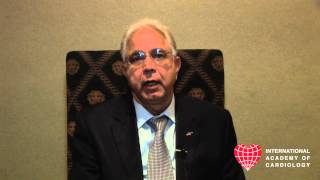
Jawahar L. Mehta, M.D., UAMS, Little Rock, AR, USA
Statins have been the cornerstone of therapy of CAD for >10 years with emphasis on high dose. We first drew attention to the rise in fasting plasma glucose (FPG) with statin use based on a follow-up of 345,417 patients from Veterans Affairs VISN 16 database. MORE»

DIURNAL RHYTHMS AND THE PATHOGENESIS OF CARDIOVASCULAR DISEASE
(click on the photo to view the video)
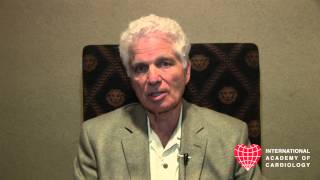
Michael J. Sole, M.D., University of Toronto, Toronto, ON, USA
Cardiovascular physiology such as heart rate and blood pressure and the incidence of adverse cardiac events exhibit diurnal variation. Shift workers have an increased risk of myocardial infarction and sudden death. We are the first to actually demonstrate that disturbed diurnal rhythms can cause cardiovascular disease. MORE»

COFFEE DRINKING AND RISK OF STROKE
(click on the photo to view the video)
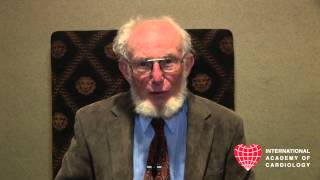
Arthur L. Klatsky, M.D., Kaiser Permanente Medical Center, Oakland, CA, USA
Objective and Background: Sparse reports suggest that coffee drinking may reduce risk of cerebrovascular disease (CVD). We explored this hypothesis in a large population. MORE»

STATINS FOR THE PRIMARY PREVENTION OF CVD IN WOMEN
(click on the photo to view the video)

Samia Mora, M.D., Brigham and Women's Hospital, Boston, MA, USA
The use of statins in patients with manifest cardiovascular disease (CVD) is established, with similar benefit in women and men, but statin use for primary prevention of CVD is controversial particularly for women. We analyzed sex-specific outcomes in JUPITER (Justification for the Use of statins in Prevention: an Intervention Trial Evaluating Rosuvastatin) and conducted an updated meta-analysis of statin use for women in primary prevention (20,147 women, >276 CVD events, mean age 63-69 years). MORE»

|
| |
| |
| |
|